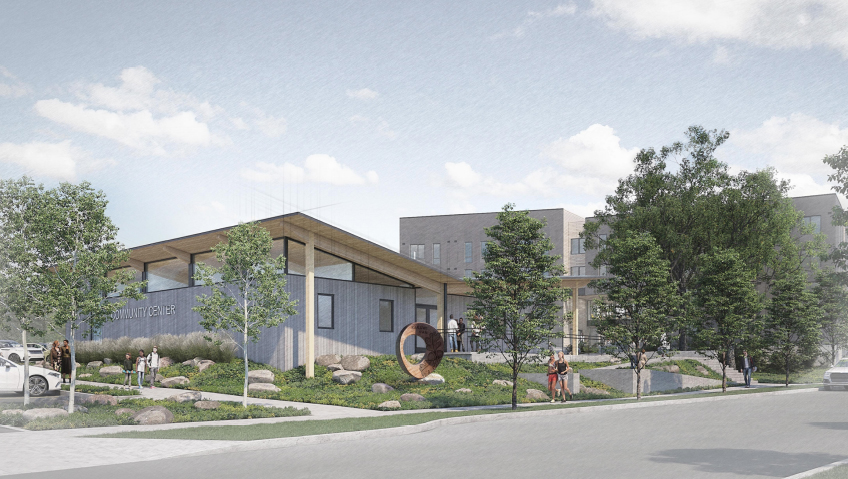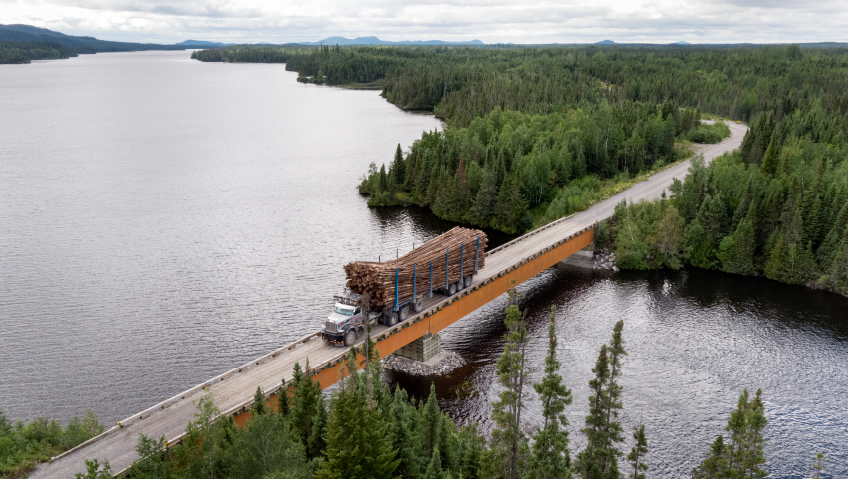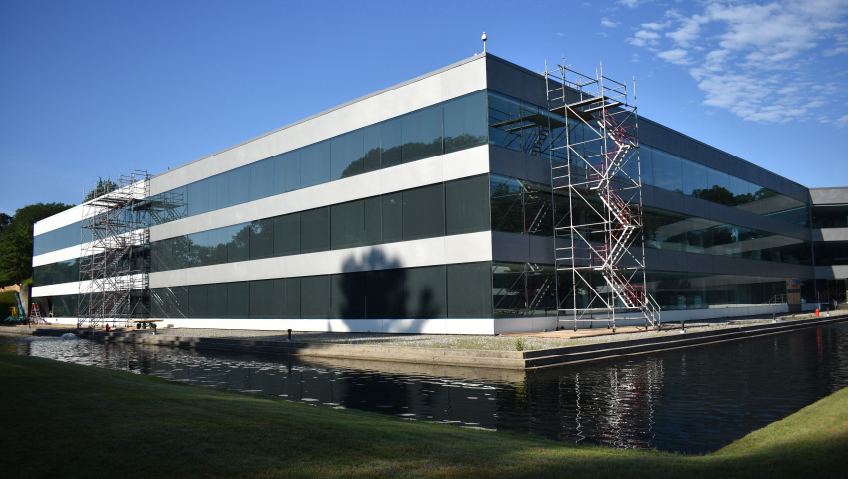When it comes to the conceptualization and design of innovative projects that artfully integrate true sustainability and embody community and equity, Portland-based Scott Edwards Architecture takes projects far beyond its clients’ imaginations.
At Scott Edwards Architecture, the projects are as diverse as its team, and when these creative minds come together, their collaborative efforts result in thoughtful, functional, and aesthetic properties that have the power to build community.
Living its values
The work at Scott Edwards Architecture is empowered by its mission and ethos, People First. Design Forward., which is a value the company lives and something that ensures true project success.
“I love our ethos because good things will come if we put people first and that includes the culture of our firm. But I do like to say that it doesn’t always come easily,” explains Associate Principal Dave Mojica, who adds that a successful project is not just a beautiful building, it is one that meets the needs of both project stakeholders and the community.
Part of the innovative approach undertaken by Scott Edwards Architecture extends to its desire to seek out new and exciting projects across sectors including public, private, and especially not-for-profit, where it can integrate sustainable design principles.
“We make it a goal to have at least one new project type a year and we already are at two this year, so being innovative and being open to new typologies is really important to who we are and has led to a lot of the success in the past,” says Principal Hayley Purdy.
Further to new typologies, Scott Edwards’ architects are proponents of sustainable design and have been over its twenty-plus year history, though over the last couple of years it has really solidified this commitment to both people and the environment.
The path to net zero
Over the last two years, Scott Edwards Architecture has integrated sustainability in its projects in new and exciting ways through the addition of a full time Sustainability Director in Juliette Grummon-Beale and through the company’s participation in the AIA (American Institute of Architects) 2030 Commitment.
AIA’s 2030 Commitment is an actionable climate strategy that has the commitment of 1,300 architecture firms. More specifically, the 2030 Commitment offers these firms a practical path to net zero energy buildings by 2030 with a goal of carbon neutrality by 2050.
“The 2030 Commitment is just a mechanism that holds architects accountable in creating a pathway to net zero energy on all our projects. It requires signing on, creating an action plan, and recording project data. We’ve reported our project data now for two years,” says Grummon-Beale of this feat—a major one, considering the firm takes on around 200 projects a year.
To achieve this end, the firm has created structures, processes, and workflows that center around sustainability, health, and wellbeing to ensure targets are being met both internally and on the projects it undertakes across various sectors and typologies.
“That’s a really exciting piece of our process that we’re building on the back end. On the front end, we’re beginning to do more energy modeling and embodied carbon analysis,” explains Grummon-Beale of efforts to take the firm’s commitment to sustainability to the next level.
As Mojica explains, “Sustainability isn’t always just energy performance and how we’re performing from a healthy environment; it’s also about how we’re creating appropriate spaces, community engagement, and successfully integrating it into the actual design.”
Designing community
The intrinsic nexus between equity and sustainability is another key element of Scott Edwards Architecture’s vision and applies to every project regardless of typology, but it is an especially important element of its affordable housing work. “To be equitable, sustainability is a component of that and a critical component of its success as well; it’s also a component of being innovative and thinking forward about design as well as how we integrate sustainability with our people-first approach,” Purdy explains.
One project that reflects this thinking is the award-winning Centennial Place Apartments in Southeast Portland, a 71-unit multifamily affordable housing project for Cascadia Health that achieved Earth Advantage Platinum, the highest level of certification Earth Advantage provides for multifamily structures.
The project featured a sizeable 75-kilowatt solar array on the roof that is used to offset electricity costs of the centralized heat pump hot water system—a savings that is passed on to tenants. Additional strategies include a heat recovery system, a robust drywell to manage 100 percent of stormwater on site, and some unique interior spaces that were designed to encourage the growth of community.
The building is built around a courtyard designed to include nature-based play opportunities for families. The common areas such as the laundry rooms and tutoring spaces look out onto the playground to create a network of safety and community for the families in the building.
“Because we had worked with this organization before, successfully providing multifamily housing, we were able to expand upon those successes and encourage, as well as challenge, that client to expand their thinking and willingness to embrace greater sustainable measures and do significant outreach within the community to integrate that feedback into the actual building layout and design,” Purdy explains.
When it comes to the creation of places and spaces that not only embrace but facilitate the concept of community, Scott Edwards Architecture hit it out of the park with the Viewfinder project for Community Development Partners in the Tigard Triangle. This six-story building is part of the urban revitalization taking place in that neighborhood, where zoning changes to improve vertical density are redefining an area previously characterized by single-family homes.
This introduced a unique set of challenges, as the project lacked a strong contextual culture. The goal of this project was to offer transitional housing for those in need of affordable housing, but that is a very broad population for whom to design. “From a design standpoint, the interesting challenge was, how do you create community when you don’t know the community that’s coming into the building and the context of the community—there’s not really much that exists from a placemaking standpoint,” says Mojica.
Scott Edwards Architecture saw this as an opportunity to create community and did so through several design considerations including multiuse spaces and community areas that facilitate passive and active engagement between residents on every floor. Further, the integration of art truly set the project apart.
“We found a local photographer that was from Tigard, we found a collage artist that was living in the Tigard community close to the site, and we found a Native American artist who was also from that area, and they created a body of work called Discovering Home,” explains Mojica. The project featured local places and information, including directions on how to get to the various locations featured in the images, which not only integrated the community into the building but offered opportunities for residents to interact with the Tigard Triangle community as well.
The team at Scott Edwards Architecture collected post-occupancy data on the Viewfinder project to determine the total operational carbon emissions on the project, and because of its performance, received the 2030 Merit Award at the 2023 AIA Oregon Architecture Awards.
One step at a time
Sustainability doesn’t always have to be the focal point of a project to have a positive impact. Scott Edwards Architecture also worked with Community Development Partners on the Mahonia Crossing project, which saw close collaboration with the client to encourage greater sustainability efforts and community-oriented design by focusing on one specific building in the complex: the 5,000 square foot community building.
“That’s a huge leap for multifamily, but it was about taking that opportunity on a standalone building: ‘we can do this and get them comfortable with the systems and comfortable with the technology,’” explains Mojica. “I think clients have to become comfortable with new technologies, new materials, new strategies, and this was a means of testing that out. It was also a place where we could implement solar and test the waters as far as that goes for our client.”
The structure, which is constructed from mass timber and features a butterfly roof, serves as a welcome center for the affordable housing complex. The complex was designed using a ‘community for all ages’ model which employed a new strategy in positioning the community center, which many insisted should be at the center of the complex.
“The community building really wasn’t bringing people together—it was dividing the community—so what we did was actually flipped it; the community building is actually at the entry of the development, and it serves as a welcome center, and then we placed the senior building right in the middle of the development,” says Mojica.
Seniors were regularly considered throughout the design process both in terms of housing availability and access, and the senior building was ultimately situated in the middle between the family housing and the community center to create passive cross-generational engagement. It is complete with a viewing deck from which residents can view the solar array for educational purposes.
These strategies resulted in a building tracking net zero energy performance and enrolled in Energy Trust of Oregon’s Path to Net Zero program to receive incentives and, while the client is certainly pleased with the results, for Mojica and Scott Edwards Architecture, “the team has been so lucky and proud to be working with clients that want to explore these things with us.”
Building on the momentum of these projects, the team at Scott Edwards Architecture will continue to find ways to engage with its clients to integrate sustainable, community-oriented design that demonstrates that amazing things can happen when you put people first. For Mojica, “The goal for all of us here, regardless of the type of work, is to be invested in positive placemaking, at all scales.”






